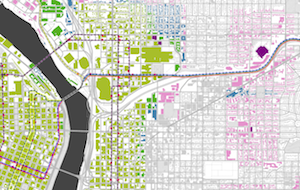Data Geniuses Will Find The Perfect House Before You Can
When Justin and his wife first moved to Portland, OR, he writes on his blog (h/t FlowingData.com), they had everything a childless couple might need — access to the grocery store, living in the “center of it all” and being nearby transit to get around their new home.
But seven years and one kid later, the couple needed something new from a home, including an actual house instead of an apartment, with outdoor space for their kid to play and be generally loud and kid-like. Many real estate listings he checked didn’t have that kind of information. So how’s a person supposed to find that in a city like Portland without paying astronomical prices?
The answer, as it turns out, is by figuring out how to use open data to your own advantage, for which you’ll need considerable knowledge to get worthwhile results.
He started by using a simple list of criteria for the location where he’d want to live, and work in other factors after he’d narrowed down Portland to “target zones” that met those requirements. The two he started with — walking distance to a grocery store and a rail stop.
Here’s where it gets into the meat of the data manipulation, using three open data sets: Open Streetmap polygons, Trimet rail stops and Portland building footprint.
I won’t claim to understand a lot (or most… okay all) of the technical language involved in the next steps of the process where he makes his own database so you should really check it out for yourself if you’re interested, but the fact remains that he was able to come up with a map that will probably let him find his perfect house before all the rest of you Portlandians can get it.
Finding the perfect house using open data [Dealloc.me]
Want more consumer news? Visit our parent organization, Consumer Reports, for the latest on scams, recalls, and other consumer issues.


